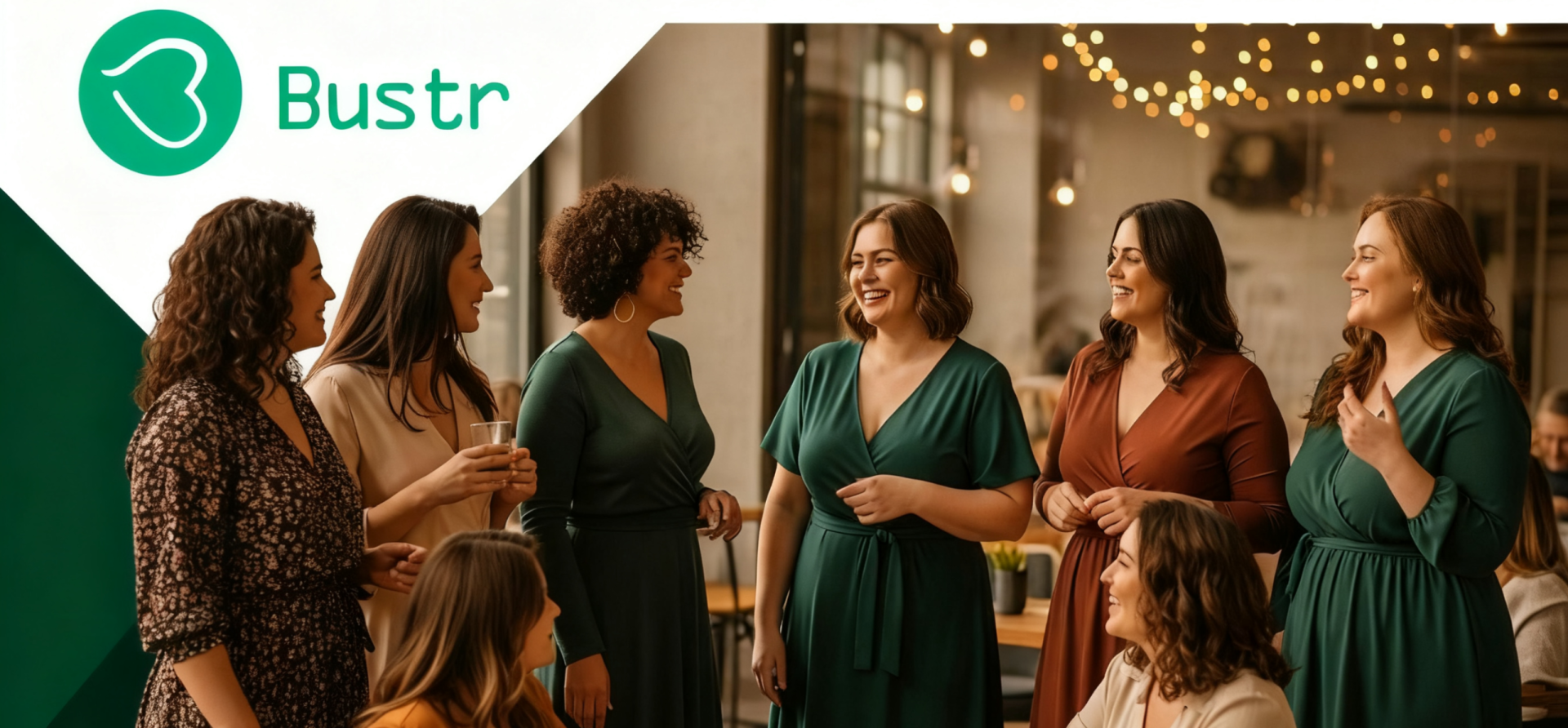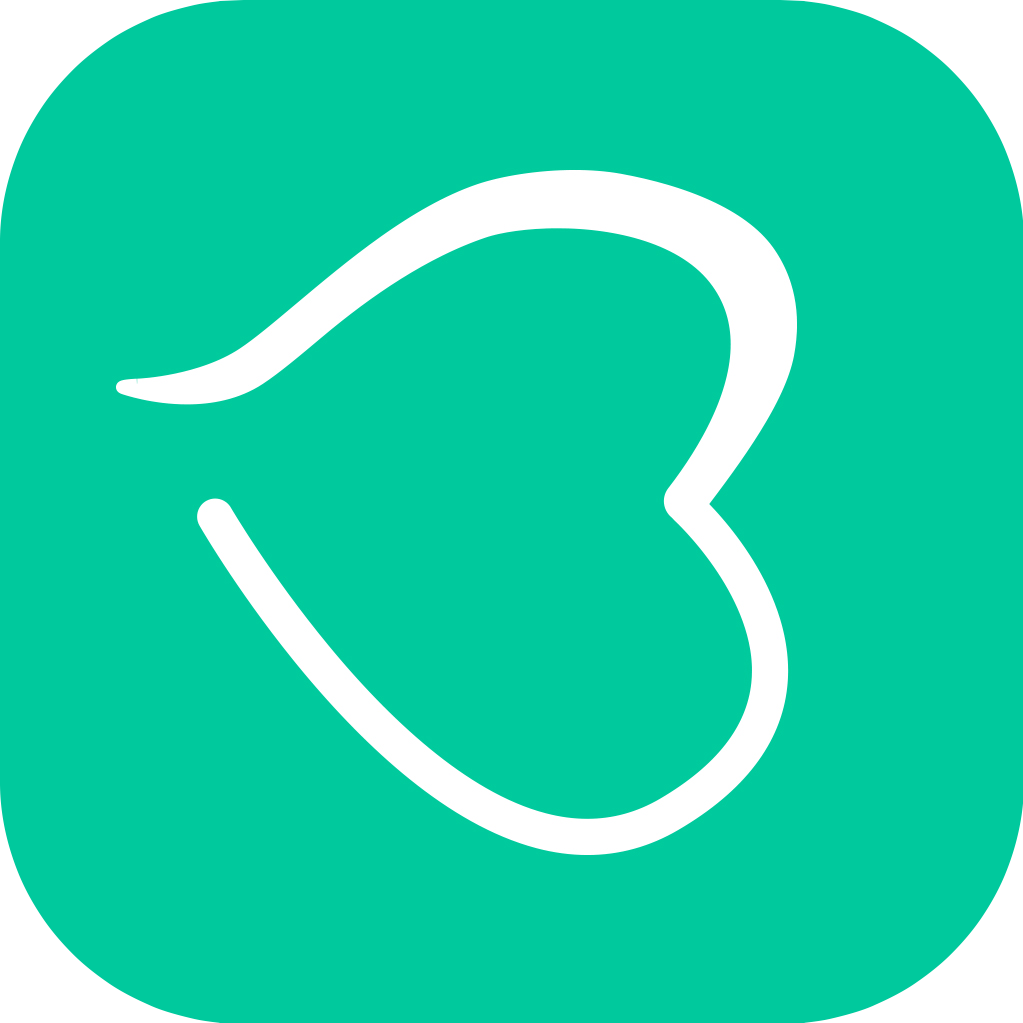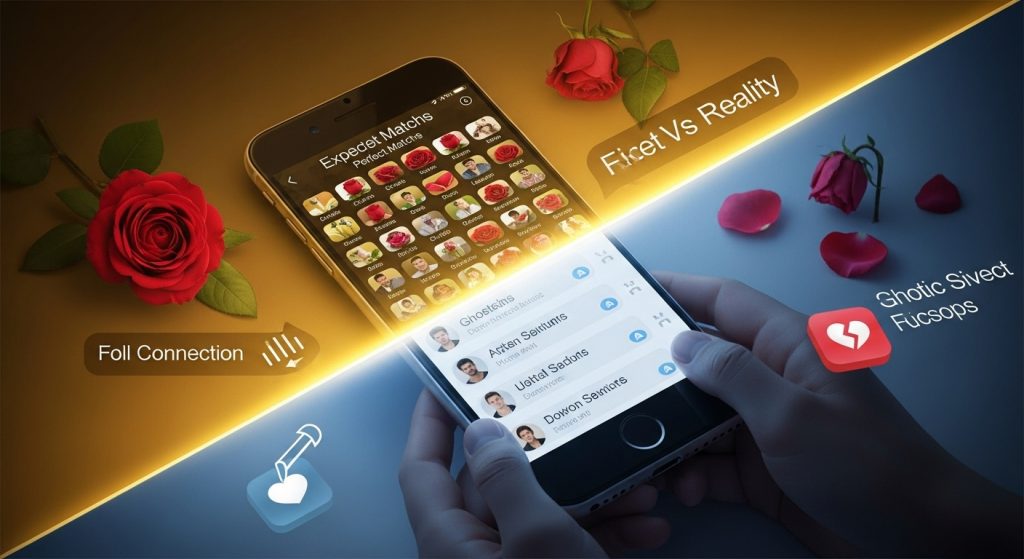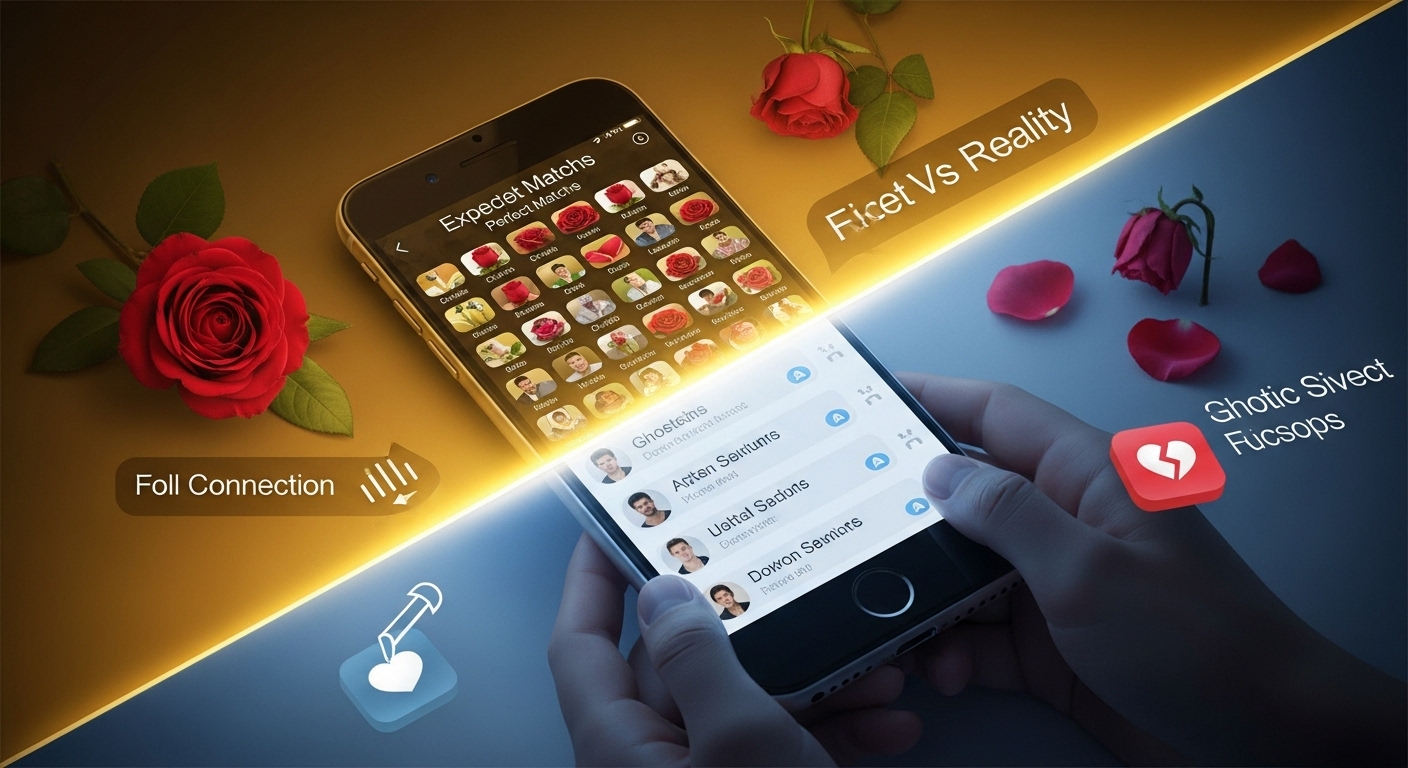
Many of us have approached a dating app with optimism, expecting fun conversations and genuine connections. The common reality, however, is a landscape of endless profiles, fleeting chats, and a deep sense of fatigue.
This experience is now widely recognized as “swipe fatigue” or dating app burnout. A Forbes Health survey found that 78% of users feel exhausted by the apps, and another study shows 79% of Gen Z report the same. We’re confronting a modern paradox—more options were supposed to mean better chances, but they often lead to greater disillusionment.
Let’s delve into the reasons for this mismatch, how it manifests in our behavior, and how some platforms, including Bustr, are working to create a better experience.
Why the Gap? The Psychology Behind Too Many Choices
Choice Overload & Decision Fatigue
This is the tyranny of too much choice. Our brains, bombarded by a relentless stream of profiles—each requiring a snap judgment—succumb to decision fatigue. Psychologists link excessive swiping to increased social comparison, a fear of being single, and the paralyzing effects of “partner choice overload.” Far from feeling empowered, we are often left immobilized, questioning every potential match.
The Highlight Reel Illusion
We’re not browsing people; we’re browsing carefully crafted personal brands. Each profile is a highlight reel of flawless photos and polished bios, setting an expectation of perfection. The subsequent conversation, however, often reveals a more mundane reality. As dating coaches point out, the disillusionment sets in when the personality behind the curated photo fails to match the dazzling promise of the profile.
Algorithmic & Platform Pressures
The architecture of the apps themselves is a core part of the problem. Their design often prioritizes engagement over connection, using algorithms that favor popular profiles and gamified features to keep us in a cycle of swiping. The fact that giants like Meta are now integrating AI into Facebook Dating to combat this very fatigue is a telling admission: the industry is finally acknowledging that its own model is burning users out.
Emotional Burn & Rejection Tally
Beneath the surface of casual swiping lies a quiet accumulation of micro-rejections. Each ignored “like” or conversation that vanishes into thin air registers as a small emotional debt. This phenomenon, often described as a cycle of “brief hope, then silence,” exacts a real psychological toll. Research corroborates this, drawing a clear link between heavy app usage and increased levels of anxiety and diminished self-esteem.
Is This You? The Unmistakable Signs of Dating App Disillusionment
Think you might be experiencing the gap? Don’t worry—you’re not cynical, you’re likely just burnt out. Here are the tell-tale signs:
You’re a match collector, not a communicator. Your match queue is full, but your inbox is a graveyard of one-word replies and dead-end conversations.
Your first dates feel like interviews, not adventures. There’s no thrill, no spark—just a polite exchange that leaves you feeling “meh.”
You’re playing a numbers game. You juggle multiple chats because putting all your hope in one person feels too risky. It’s less about connection and more about managing your emotional exposure.
You’re secretly holding out for a soulmate unicorn. Everyone is compared to a perfect, idealized standard that likely doesn’t exist, so you end up swiping left on perfectly good humans.
The mere thought of opening the app is exhausting. It doesn’t feel fun or hopeful anymore; it feels like a chore that drains your energy.
Sound familiar? You’re not alone. This is the reality of dating app fatigue. As Psychology Today explains, the constant cycle of swiping and superficial interaction is a recipe for feeling disconnected and drained.
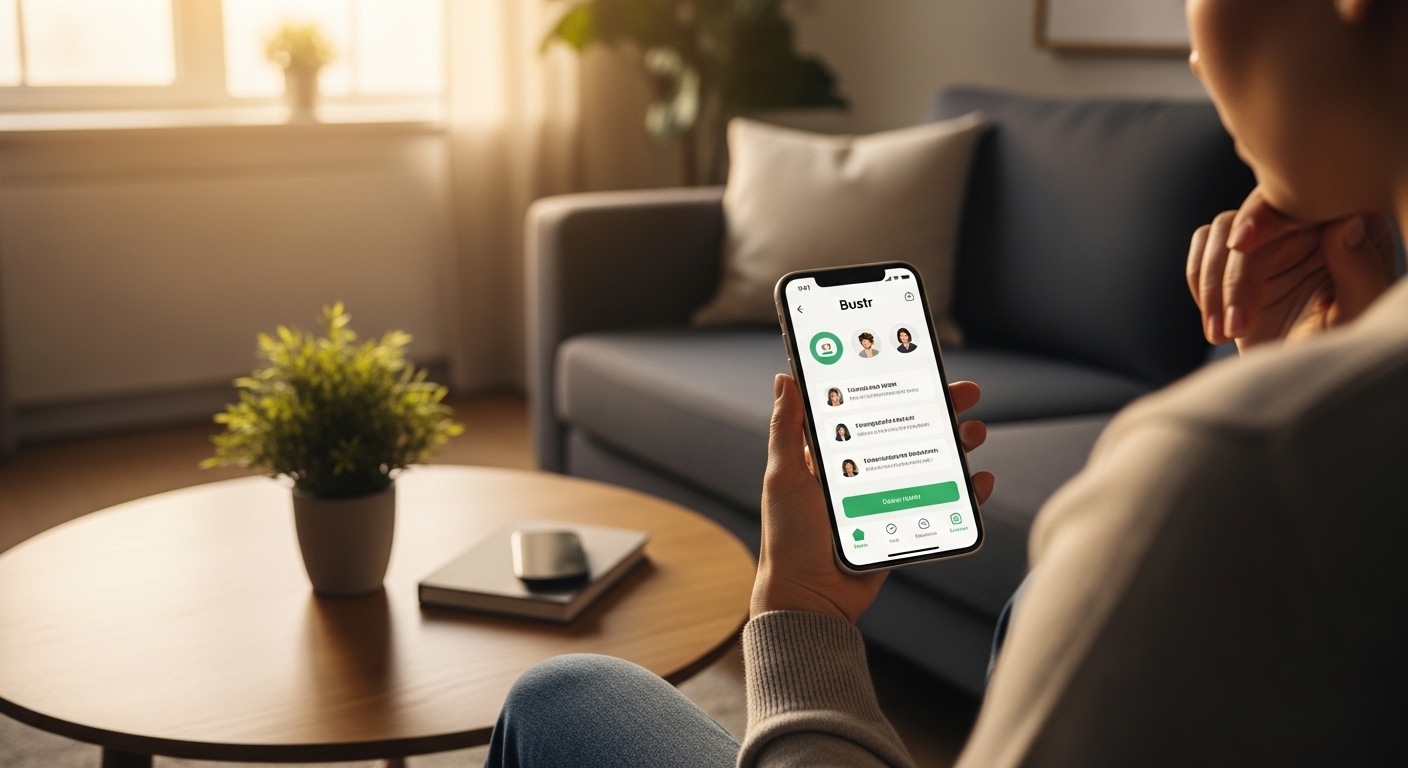
How Bustr Fits In: Reimagining “More Options, Less Disappointment”
Let’s pause and consider a different approach: rather than adding more profiles, what if the focus was quality, authenticity, and lower noise? That’s where Bustr wants to make a difference.
Curated Quality, Not Overwhelming Quantity: We move beyond endless swiping by prioritizing meaningful, compatible matches. This means fewer, more intentional connections that respect your identity, intentions, and the principle of body positivity.
A Zero-Tolerance Sanctuary: By actively fostering a safe space with strict policies against harassment and fetishization, we remove the emotional labor of constant vetting. Conversations can start from a place of mutual respect, not defensiveness.
A Community, Not Just a User Base: At its heart, Bustr is an inclusive community for the BBW/BHM group and their admirers. It’s a platform built on the foundational values of body positivity, self-love, and mutual respect, ensuring discovery is both diversified and affirming.
Strategies to Narrow the Gap: How to Date Smarter, Not Harder
Feeling the burnout? You don’t need to delete the dating apps to reclaim your sanity. Here’s how to navigate the digital dating world with purpose and protect your peace in the process.
Set Reasonable Expectations
Treat dating apps like a crowded social event, not a matchmaking guarantee. As one coaching guide astutely notes, you might meet someone fascinating, or you might simply enjoy the atmosphere. Release the pressure for every swipe to lead to a fairy tale. Grounded expectations are the first defense against disappointment.
Use Time Limits
Limit your swiping sessions to 20-30 minutes daily to prevent the app from becoming a mindless, obsessive habit. As Psychology Today recommends, this conscious constraint keeps you in the driver’s seat, ensuring you use the tool instead of the tool using you.
Prioritize Depth Over Breadth
Instead of juggling dozens of shallow chats, focus your energy on 2-3 promising conversations. Prioritize open-ended questions that reveal character and values. This is how you build connection, not just contact.
Take Breaks
When fatigue, cynicism, or apathy creeps in, log off for a designated period—a few days, a week, or more. This isn’t quitting; it’s a strategic reset. As reported by AP News, users who take breaks protect their self-worth and return with renewed clarity.
Beware of Bio-Baiting
One newer trend is bio-baiting — overselling yourself in your profile to attract more matches, then disappointing behind the scenes. This attracts people who are interested in the real you and sets the stage for a connection that thrives off the screen.
Curate Your App Ecosystem
Not all apps are created for the same purpose. Be intentional: use one app for seeking serious relationships and another, perhaps, for more casual social discovery. This segmentation helps you approach each interaction with the right mindset, reducing the cognitive dissonance of treating every match identically.
Reflect on Your Values
Clarity is power. Before you next open an dating app, ask yourself: What kind of partner do I respect? How much time and effort do I want? What am I ready to compromise on, and what is a deal-breaker? This self-knowledge acts as an internal compass, helping you quickly recognize when a potential match aligns with your reality—and when it’s time to walk away.
Bridge That Expectation–Reality Gap
The dating app evolution promised a world of limitless connection. Today, many users find themselves crashing against swipe fatigue, broken promises, and the harsh truth that more options don’t always equal better ones.
This gap isn’t merely a technological failing; it’s a fundamental tension between the seductive marketing of infinite possibility and the authentic, often messy, realities of human connection. But within that tension lies your power to change the experience. The bridge across this gap is built with conscious strategy, profound self-awareness, and a deliberate choice to engage with communities and platforms (like Bustr) that are designed for quality, respect, and authenticity over sheer volume.
So the next time you feel that weary sigh escape mid-swipe, pause. Take a breath and ask yourself: “Am I expecting too much? Are they expecting too much? Can we shift toward substance over spectacle?” Because in a sea of options, the most powerful choice might be to choose connection — not quantity.
